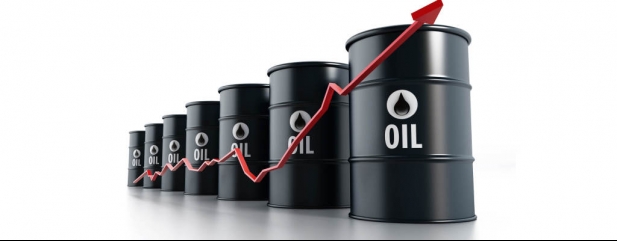Archived article
Please note that tax, investment, pension and ISA rules can change and the information and any views contained in this article may now be inaccurate.
Surge in commodity prices threatens to derail the global economy

AJ Bell is an easy to use, award-winning platform Open an account
We've accounts to suit every investing need, and free guides and special offers to help you get the most from them.
You can get a few handy suggestions, or even get our experts to do the hard work for you – by picking one of our simple investment ideas.
All the resources you need to choose your shares, from market data to the latest investment news and analysis.
Funds offer an easier way to build your portfolio – we’ve got everything you need to choose the right one.
Starting to save for a pension, approaching retirement, or after an explainer on pension jargon? We can help.
Please note that tax, investment, pension and ISA rules can change and the information and any views contained in this article may now be inaccurate.

Prices of everything from oil and wheat to nickel are surging amid forecasts that supplies from Russia and Ukraine will be disrupted. This threatens to hurt corporate earnings and curb business investment, and at the same time cause consumers to scale back their spending, both leading to economic weakness.
The S&P GSCI Commodity index, made up of a basket of commodities across the spectrum from agricultural products to hydrocarbons, metals and livestock, is up 44.5% year-to-date and 23.8% since Russia invaded Ukraine on 24 February.
According to estimates from Liberum, Russia exports between 10% and 45% globally of key commodities like oil, gas, platinum group metals, aluminium and nickel, while Russia and Ukraine account for a combined 30% or so of global wheat supply.
Speculation over a ban on Russian oil imports briefly threatened to take oil above its previous 2008 record high of $147 per barrel while nickel, a key component in electric vehicles, hit an all-time high of $100,000 per tonne on 8 March. Gas prices have surged with the Kremlin threatening to cut off Europe’s supply.
Wheat prices are also soaring, a development which could have geopolitical consequences given the potential for populations in the developing world to go hungry.
Some of the heat was taken out of these commodities as European leaders cast doubt on an outright ban on Russian gas and oil, after the idea was apparently floated in Washington, presumably on the basis the pain for their economies and populations would be too acute to bear.
The fallout from the invasion is leading to comparisons with the 1970s when cuts by producers’ cartel OPEC to oil production shook Western economies. UK think-tank the Resolution Foundation is warning of the biggest decline in UK disposable incomes since the mid-1970s.
Liberum analyst Tom Price makes the same comparison. He says: ‘Given the potentially large scale/duration of this conflict, we now believe that the global economy is exposed to an energy-related supply-side shock that resembles those OPEC-led oil production cuts of the 1970s.’
The big risk is that we are headed for an extended period of stagflation or recession accompanied by rising prices. This creates an extremely tricky backdrop for central banks – with the US Federal Reserve expected to introduce the first post-pandemic rate hike on 16 March.
Ordinarily central banks would try to cushion the impact on consumers and businesses by cutting rates or introducing financial stimulus for the economy, but they are constrained thanks to already loose monetary policy and the prospect of inflation running further out of control.
These articles are provided by Shares magazine which is published by AJ Bell Media, a part of AJ Bell. Shares is not written by AJ Bell.
Shares is provided for your general information and use and is not a personal recommendation to invest. It is not intended to be relied upon by you in making or not making any investment decisions. The investments referred to in these articles will not be suitable for all investors. If in doubt please seek appropriate independent financial advice.
Investors acting on the information in these articles do so at their own risk and AJ Bell Media and its staff do not accept liability for losses suffered by investors as a result of their investment decisions.
The value of your investments can go down as well as up and you may get back less than you originally invested. We don't offer advice, so it's important you understand the risks, if you're unsure please consult a suitably qualified financial adviser. Tax treatment depends on your individual circumstances and rules may change. Past performance is not a guide to future performance and some investments need to be held for the long term.
 magazine
magazine